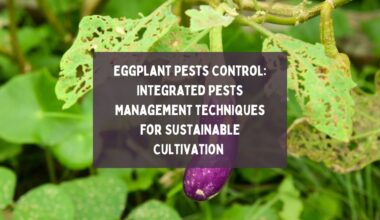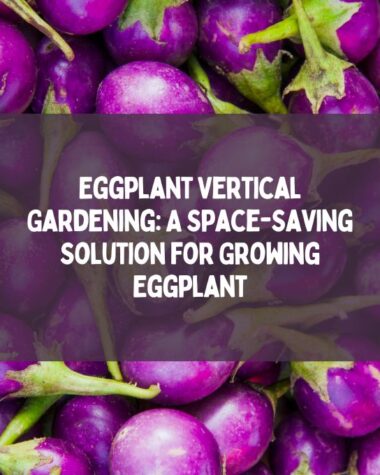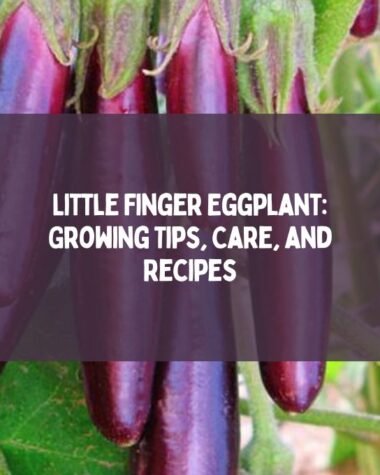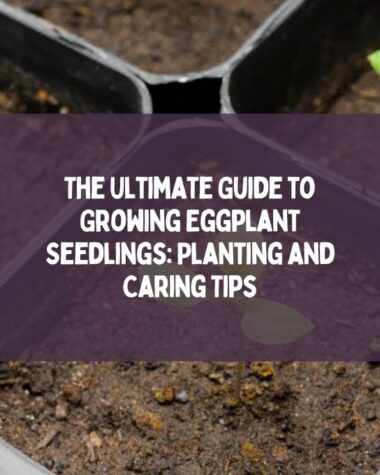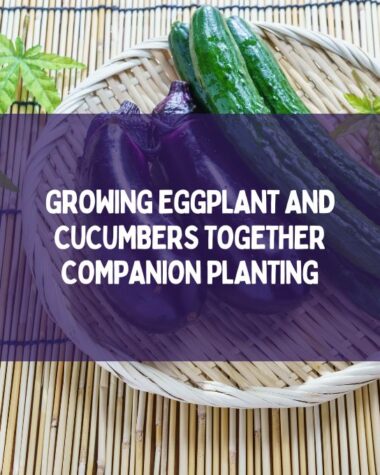Eggplants are versatile vegetables that are popular in various cuisines around the world. With their glossy, deep purple skin and unique flavor, eggplants add depth and richness to many dishes.
If you’re an avid gardener or a commercial farmer, you might be interested in maximizing eggplant yields to ensure a bountiful harvest.
In this article, we will explore effective strategies and techniques to boost eggplant yields, from seed selection to proper cultivation practices.
Selecting the Right Eggplant Varieties

Choosing the appropriate eggplant variety is crucial for increasing yields. Different eggplant varieties have varying growth habits, fruit sizes, and resistance to pests and diseases.
Consider the following factors when selecting eggplant varieties:
1. Varieties Suitable for Your Climate
Eggplants thrive in warm climates, so choose varieties that are well-adapted to your specific region. Research local recommendations or consult with agricultural extension services to identify the best varieties for your area.
2. Disease Resistance
Some eggplant varieties are bred to be resistant to common diseases, such as verticillium wilt or bacterial spot. Opting for disease-resistant varieties can minimize crop losses and increase overall yields.
3. Fruit Size and Shape
Eggplants come in various shapes and sizes. Consider the intended use of your eggplants—for example, whether you plan to sell them at a market or use them for cooking—and select varieties that align with your preferences.
4. Days to Maturity
Eggplant varieties have different maturation periods. If you have a short growing season, choose varieties that mature quickly to ensure a successful harvest.
Related Reading
- 18 Common Aubergine Growing Problems and Their Solutions
- The Incredible Benefits of Providing Aubergine Plant Support
- Do Eggplants Prefer Sun or Shade? An Overview
- Guide On Eggplant Life Cycle: From Seed Germination To Harvesting And Storing
Providing Optimal Growing Conditions

Creating the ideal environment for eggplants is essential to promoting healthy growth and maximizing yields.
Pay attention to the following aspects when cultivating eggplants:
Soil Preparation and Fertilization
- Soil Type and pH: Eggplants thrive in well-drained soil with a pH level between 5.5 and 6.8. Test your soil’s pH using a soil testing kit and amend it accordingly with organic matter or lime to reach the optimal range.
- Organic Matter: Incorporating organic matter, such as compost or well-rotted manure, into the soil before planting provides essential nutrients and improves soil structure, leading to healthier plants and increased yields.
- Balanced Fertilization: Eggplants are heavy feeders and require regular fertilization throughout the growing season. Apply a balanced fertilizer, such as a 10-10-10 or 14-14-14 blend, according to the package instructions.
Starting from Seeds or Transplants
- Starting Indoors: For regions with shorter growing seasons, starting eggplants indoors several weeks before the last frost date allows for earlier planting and extended fruiting time. Use seedling trays or small pots filled with seed-starting mix and provide warmth and adequate lighting for optimal germination.
- Hardening Off: Before transplanting seedlings into the garden, gradually acclimate them to outdoor conditions by exposing them to increasing amounts of sunlight and wind. This process, known as hardening off, prevents transplant shock and ensures successful establishment in the garden.
Proper Plant Spacing and Support
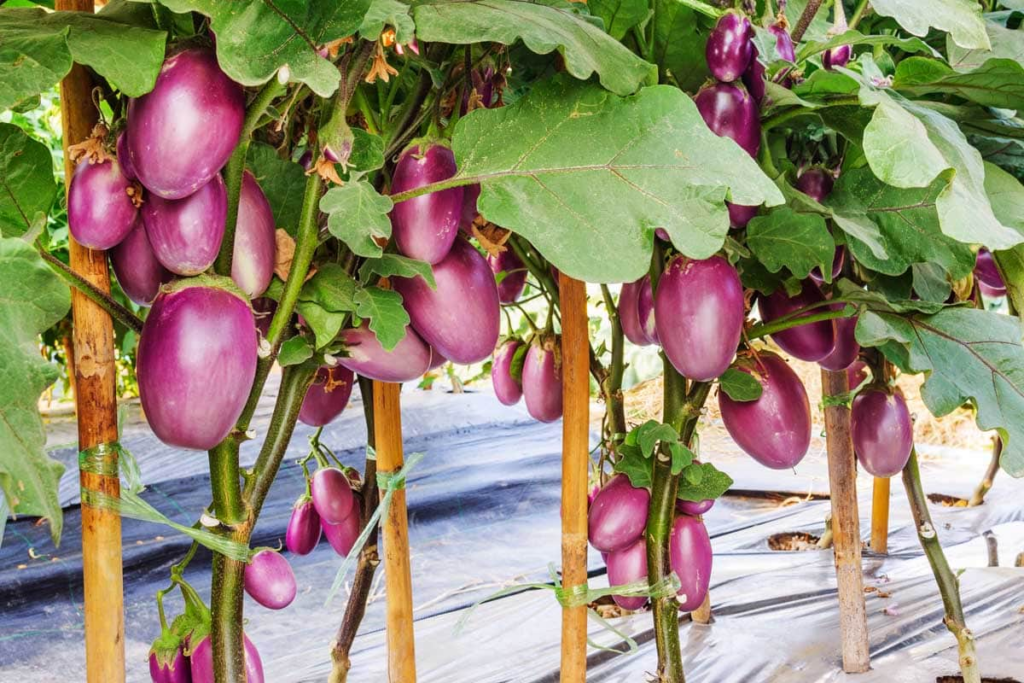
- Spacing: Eggplants require sufficient space between plants for optimal growth and airflow. Provide a minimum of 24 inches (61 cm) between plants in rows spaced 30 to 36 inches (76 to 91 cm) apart. Crowding can lead to increased disease susceptibility and reduced yields.
- Staking or Caging: Supporting eggplants with stakes or cages prevents the plants from sprawling on the ground, improves air circulation, and facilitates an easier harvest. Install stakes or cages at planting time to avoid damaging the plant’s root system later.
Watering and Irrigation

Watering practices greatly influence eggplant yields. Proper watering ensures the plants receive adequate moisture while preventing issues such as blossom end rot or fungal diseases.
Consider the following guidelines:
- Consistent Moisture: Eggplants prefer consistent soil moisture, but avoid overwatering, as it can lead to root rot. Keep the soil evenly moist by providing approximately 1 to 1.5 inches (2.5 to 3.8 cm) of water per week, either through rainfall or irrigation.
- Mulching: Applying a layer of organic mulch, such as straw or wood chips, around the base of the plants helps conserve soil moisture, suppress weeds, and maintain more stable soil temperatures. Mulching also minimizes fruit rot by preventing direct contact between the eggplants and the soil.
Effective Pest and Disease Management
To achieve high eggplant yields, it is essential to protect the plants from common pests and diseases that can hinder growth and reduce productivity.
Here are some strategies for effective pest and disease management:
Common Eggplant Pests
- Aphids: Aphids are small, sap-sucking insects that can cause stunted growth and transmit viral diseases. Control aphids by spraying a strong stream of water on the affected plants or using insecticidal soap or neem oil.
- Flea Beetles: These tiny beetles chew small holes in eggplant leaves, causing foliage damage. To deter flea beetles, apply a layer of floating row cover over young plants or use organic insecticides labeled for flea beetle control.
Disease Prevention and Management
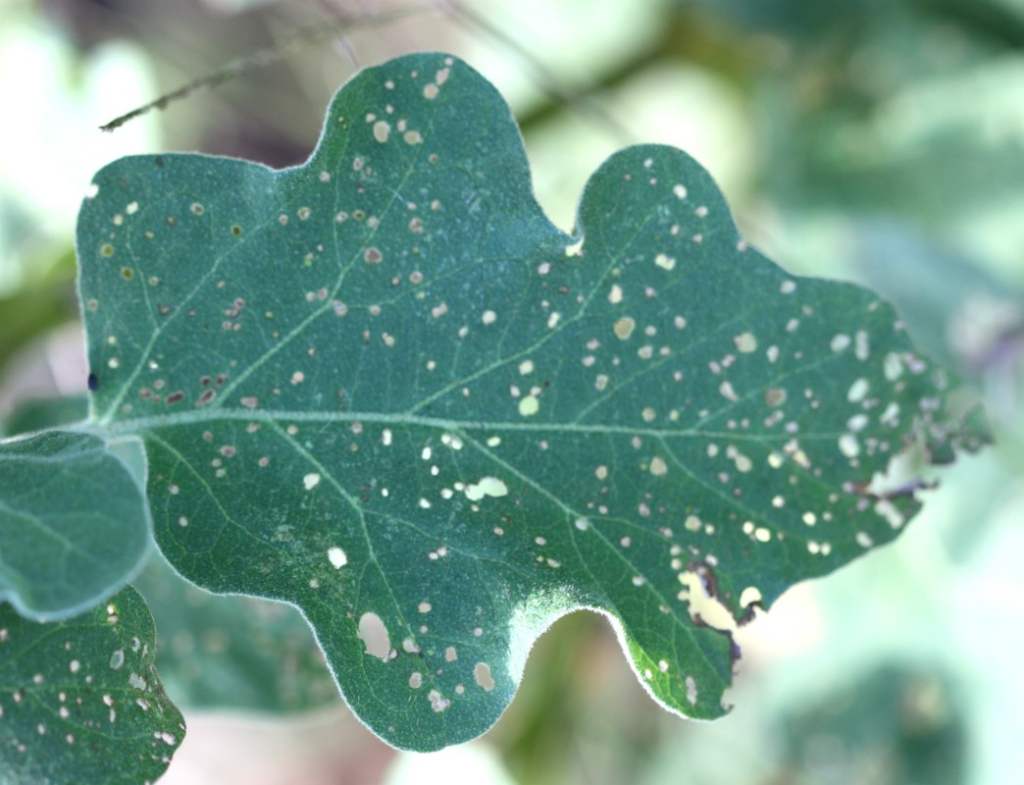
- Verticillium wilt: This soilborne fungal disease affects eggplants and can cause wilting and decline. Planting resistant varieties and practicing crop rotation can help manage verticillium wilt. Avoid planting eggplants in areas where susceptible crops, such as tomatoes or potatoes, have been grown in recent years.
- Bacterial Spot: Bacterial spot is a common disease that causes dark, sunken lesions on eggplant fruit and leaves. Apply copper-based fungicides according to the package instructions to prevent bacterial spot infections.
Harvesting and Post-Harvest Tips

Knowing when and how to harvest eggplants is essential for maximizing yields and ensuring peak flavor and quality.
Follow these guidelines for optimal harvesting and post-harvest handling:
Harvesting Time
Harvest eggplants when they reach their mature size and color, typically 60 to 80 days after transplanting. Gently press the fruit with your finger; if the skin springs back, the eggplant is ready for harvest.
Using Pruning Shears
To harvest eggplants, use clean pruning shears or a sharp knife to cut the fruit with a short stub of stem attached. Avoid pulling or twisting the eggplant, as this can damage the plant.
Proper Storage
Store freshly harvested eggplants in a cool place, ideally around 50°F (10°C) with high humidity. Avoid storing them near fruits that produce ethylene, such as apples or tomatoes, as it can accelerate ripening and spoilage.
Conclusion
By implementing the strategies and techniques discussed in this article, you can significantly increase eggplant yields and enjoy a plentiful harvest.
Remember to select suitable varieties, provide optimal growing conditions, manage pests and diseases effectively, and practice proper harvesting and post-harvest techniques.
With patience, care, and attention to detail, you’ll be rewarded with an abundance of delicious eggplants for your culinary delights.
Related Reading
- How To Grow Pumpkins – A Step-by-step Guide
- What Are The Vitamins in Carrots? FAQs Answered
- Tomato Nutrition: The Key to a Healthy Diet
- Black Spots On Zucchini Leaves: Reasons & Prevention
- Cucumber Slicing: How to Slice a Cucumber Perfectly?
- What is a Market Gardener? All You Need to Know About Marketing Gardening
FAQs about Increasing Eggplant Yields
What is the ideal time to plant eggplants?
Eggplants thrive in warm weather, so it’s best to plant them after the danger of frost has passed and soil temperatures have warmed to around 70°F (21°C).
How often should I fertilize my eggplants?
Fertilize eggplants every two to three weeks during the growing season with a balanced fertilizer. Follow the package instructions for application rates.
How long do eggplants typically produce fruit?
Eggplants are annual plants that can produce fruit for several months, usually from mid-summer until the first frost in cooler climates.
